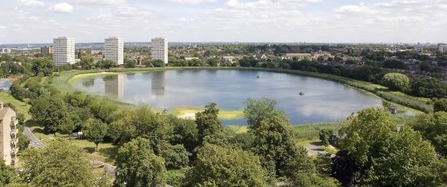
Housing White Paper: creating places for people and wildlife to thrive

On 7 February 2017, the government published its much anticipated White Paper on housing, through which it intends to fix the broken housing market so that “more ordinary working people from across the country can have the security of a decent place to live”.
It proposes to do this by reducing obstacles to house building to help local authorities, developers and Small and Medium-Sized Enterprise (SME) builders build the homes Britain needs and by improving affordability and protections for renters and home purchasers.
With rising levels of homelessness and rough sleeping and so many people living in unsuitable, damp and highly uncertain accommodation, the government’s social intent is to be welcomed.
For those of us keen to see housing developments deliver more for the environment, there are some obvious crumbs of comfort through increased protection for ancient woodland and veteran trees and continuing support for the Green Belt, although there are some details which require a closer look, including:
- changes to the presumption in favour of sustainable development and clarification of which national policies provide a strong reason to restrict development
- the presumption that brownfield land within settlements is suitable for housing (unless there are clear and specific reasons to the contrary)
- wider roll out of the pilot licensing system for protected species such as newts, which are cited as a significant impediment to timely housing delivery (I would challenge this assumption. While often cited as such, in reality they are blamed unfairly and disproportionately when they only affect such a tiny percentage of developments)
However, I’m more struck by what the White Paper doesn’t say on the environment.
The government recognises that development is about far more than just building homes and that to thrive, communities need roads, rail links, schools, shops, GP surgeries, parks, playgrounds and a sustainable natural environment. But it doesn’t give any guidance on how this should be done.
The government is committed to leaving the environment in a better state than it found it, for the sake of future generations. But to deliver on that ambitious commitment, the programme of building a million new homes by the end of 2020 must have green aims and natural infrastructure embedded within it.
While we can expect the soon-to-be-published 25 Year Plan for the environment to feature green infrastructure, this will not be housing developers’ automatic document of choice. It is therefore imperative that the government’s housing vision and strategy articulates how and why housing developers should be creating places where people and wildlife flourish.
The government should be giving much stronger signals and incentives to the housebuilding industry on this, for example by:
• Requiring ecological networks and green infrastructure to be provided in all major housing developments
• Introducing a new policy that housing developments must deliver a net gain for biodiversity
• Promoting and incentivising exemplar developments so that they become business as usual
Wildlife Trusts expect all housing developments to make significant contributions to local wildlife and habitats. There are many examples of Trusts and developers working together to achieve this. For example, London Wildlife Trust partnered with Thames Water and Berkeley Homes at Woodberry Wetlands, to deliver an urban wetland oasis rich in wildlife. Dorset Wildlife Trust has been a key player in the inspiring redevelopment of the St Leonards Hospital site, which will deliver a major housing scheme and precious heathland habitats for threatened wildlife. But sadly, many housing schemes are at best ambivalent and, at worse, cause significant damage to wildlife. In taking the White Paper forward, the government has an opportunity to change this.
The Wildlife Trusts will be responding to the consultation on the White Paper. We will also be publishing our vision for housing and wildlife as part of this, which we believe, thanks to our collective expertise and experience of working with developers, offers a positive and practical way forward.

